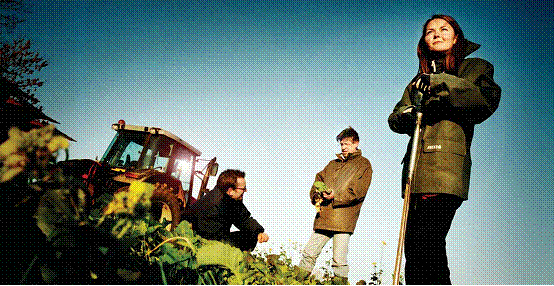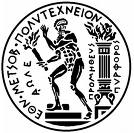AG2020
Foresight Analysis for World Agricultural Markets (2020) and Europe

AG2020 Consortium Meeting and 3rd Expert Workshop
on
Images of the Future and Policy Scenarios for the AG2020
Chania, 2-4 September 2009
Expert Workshop on 3 September 2009
Venue: Meditteranenan Agronomic Institute of Chania (MAICh)
http://www.maich.gr/p/conference/
LIST OF PARTICIPANTS
.............................................................................................................................
Experts
Ana Iglesias, Prof. Department. of Agricultural Economics andSocialSciences, Universidad Politecnica de Madrid - ana.iglesias@kpm.es
Klaus Grunert, Prof. University of Århus, MAPP – klg@asb.dk
Patrick Grehan, Director Crehan, Kusano & Associates, Belgium -patrick.crehan@cka.be
Ruuta Kuttim Private consultant - Estonia
Niels Lindberg Danish Agriculture & Food Counsil
Gerrit Meester, Prof. Agricultural Policy Adviser within the Department of International Affairs in the Netherlands
Spetsidis Nicholas Local Expert - nspetsidis@essenceconsulting.gr
Christian Christensen CEO, Solum Group – cbsc@solum.dk
Hristofor Bunardzhiev CEO of Bulgaro Group Holding - h.bunardzhiev@bulagro.com
AG2020 Working Group Members
Kristian Borch RISOE National Laboratory, Technical University of Denmark (Project Coordinator) - krbo@man.dtu.dk
Maria Giaoutzi National Technical University of Athens (NTUA) – WP5 Leader (Local organizer) – giaoutsi@central.ntua.gr
Anastasia Stratigea National Technical University of Athens (NTUA) – WP5 (Local organizer) – stratieg@central.ntua.gr
Peter Nijkamp Faculty of Economics and Business Administration, VU University Amsterdam (FEBA) – WP5 - pnijkamp@feweb.vu.nl
Martin Banse Economics Research Institute (LEI) – WP3 - Martin.Banse@wur.nl
Jørgen E.Olesen Aarhus University (AU) – WP1 Leader - JorgenE.Olesen@agrsci.dk
Kristina Georgieva AgrobioInstitute (ABI) – WP6 - kristina@abi.bg
Atanas Atannasov AgrobioInstitute (ABI) – WP6 - atanas_atanassov@abi.bg
Marina Zapilko University of Applied Sciences Weihenstephan (UAS) – WP4 - m.zapilko@wz-straubing.de
Tim Taylor Metroeconomica (METRO) – WP3 - ecstjt@bath.ac.uk
General Background for the Experts
AG2020 - Foresight analysis for world agricultural markets (2020) and Europe - is a research project funded within the 6th Research Framework Program - Priority 1 - Sustainable management of Europe’s natural resources.
The objectives of AG2020 are:
- to develop a foresight methodology enabling the study of the various types of agricultural systems and their specific challenges and constraints, in the EU countries
- to identify and analyse trends and influential factors (drivers of change) by use of participatory approaches, that may influence the possible future developments of EU agriculture in the various countries. This includes combination of both quantitative and qualitative data by way of scenario methods using indicators and stakeholder validation
- to develop strategic policy scenarios (backcasting1) based on the identified major drivers of change for the impact assessment of the probable and desirable future directions of agriculture both at a regional and a European level for the effective enforcement of the proposed alternative sets of policies
- to develop indicators of EU sustainability targets in order to evaluate the different policies on a regular basis and to perform sensitivity analysis to policy scenarios on a regional basis
- to map the different types of challenges in agriculture in the different EU regions and visualise the impact of a range of policy scenarios
More information about the project can be found on the AG2020 website:
Objectives and Structure of the Experts’ Workshop
A first workshop, held in Copenhagen in May 2007, discussed the methodological approach of AG2020 and elements of this approach. A second workshop, held in Florence in October 2008, continued the discussions elaborating on the assumptions and key trends for the AG2020 baseline as well as the draft Images of the Future in the context of AG2020.
From the two workshops, it emerged that transparency in the process of developing the project baseline is the key for acceptability of the baseline scenario. In respect to the Images of the Future, workshop discussions have resulted to further indulgence and convergence towards more cohesive and transparent Images.
The Chania workshop is the last workshop of the AG2020 Project where a group of experts from Europe has been invited, aiming at validating results and get input from experts’ specialized knowledge.
2.1. The Objectives of the Experts’ Workshop
The objectives of the Chania workshop are:
- To further elaborate on baseline scenarios;
- To set the targets for the three AG2020 images and put them in the perspective of the baseline;
- To elaborate on policies measures, packages and paths that should become part of the Policy Scenarios;
- To assess in a qualitative way the impact of these policies on the EU agricultural system;
More precisely, the purpose of the 3rd workshop is described below.
Validation of images and baseline
In general, comments are needed on whether the current work is adequate and agreeable, and where there is a need for reservations (in your opinion) towards too strong conclusions.
So the following questions should be replied in a written form and returned to partners the latest till the 25th of August in order to further stimulate the discussion during the workshop.
- Is it the idea behind the images clear; to meet the scale of change in the targets that is needed according to the baseline?
- Are the assumptions of the baseline scenario understandable, sufficient and plausible?
- Are the images understandable, coherent, comprehensive, adequate and acceptable within the framing?
- Are the images clearly enough distinguished among each other?
- Are there missing elements and weaknesses in the baseline, and in the images?
- Are the images in line with the most important driving forces for trends and developments in the agricultural sector?
Also provide feedback on:
- Quantification of the images – what should be altered?
- Linking baseline and images – how do the images correspond to the baseline and targets?
- Identifying missing elements/what has been overlooked in images? Assessment of the impact of policy measures and technologies for target achievement
Various types of assessment have to be carried out in order to rank the impact of policy measures.
So the following questions should be replied in a written form and returned to partners the latest till the 25th of August in order to further stimulate the discussion during the workshop.
Qualitative assessments on the strength of policy measures (and technologies) for the agricultural sector in the different matrices, regarding their impact on key factors of agriculture (Using templates and ranking from +++ to –) (see report)
Qualitative assessments with priorities over time horizon of likely effects, likely impacts on CO2, likely effects on environment and food quality/safety, implementation issues etc.(see report)
Assessing cost-effectiveness, lack of technological break-through, acceptability, other obstacles etc of the matrices
Please provide feedback on:
Assessment of the technological potentials and the limits for meeting the targets by technological solutions.
Policy measures missing in the present context?
The best way to cluster policy measures to maximize effect?
The best timing for introducing policy measures?
The policy measures that are most relevant to address the targets?
The obstacles to implement the policy measures?
The policy measures for which it is difficult to get societal acceptance of?
Please focus also on potentials and obstacles in technologies and policy measures, and have different aspects included – depending on your expertise:
What mix of technological applications will support target achievement in the different images?
How can market push demand and supply in agriculture towards sustainability?
What measures will motivate decoupling?
Others – please indicate.
Structure of the workshop
The workshop is divided into three entities:
Entity 1: Background and Images of the Future of AG2020;
Entity 2: Policies of an EU agriculture baseline; and
Entity 3: Draft Policy Scenarios in the AG2020 context
The project partners will have an opportunity to contribute to the discussions in all sessions.
Description of roles
Role of invited experts:
- Please read before the workshop the baseline and Images of the Future Reports
- Give feed back according to agenda
- Perhaps review after the workshop the Workshop Report, Policy Measures and outcome of the workshop.
Role of the working group members of AG2020 during the workshop:
- Prepare and give presentations and wrap up in plenary
- Participate in discussions in plenary and in groups
- Document discussions in groups, writing in templates on matrix etc.
Agenda
of the AG2020 Consortium Meeting and 3rd Expert Workshop
on
Images of the Future and Policy Scenarios
for the AG2020
Chania, 2-4 September 2009
Venue: Meditteranenan Agronomic Institute of Chania (MAICh)
http://www.maich.gr/p/conference/
Agenda of the Chania AG2020 Workshop – 2.9.09
Time |
Topic |
9.00-9.30 |
Welcome and introduction / Kristian Borch (RISOE) |
9.30-10.00 |
Baseline Scenario / Martin Banse (LEI) |
10.00-10.30 |
General presentation of case-studies |
10.30-11.00 |
Coffee break |
11.00-11.20 |
Case studies – Presentation of final results - Greece
|
11.20 -11.40 |
Case studies – Presentation of final results - Bulgaria
|
11.40-12.00 |
Case studies – Presentation of final results - Tuscany
|
12.00-12.20 |
Case studies – Presentation of final results – Denmark
|
12.20-13.00 |
Final discussion and conclusion |
13.00-14.30 |
Lunch |
14.30-15.15 |
The concept of decoupling (Martin Banse, Eveline van Leeuwen |
15.15-16.00 |
Technology and energy - Policy measures per Image |
16.00-16.30 |
Regional Development – Social Cohesion - Policy measures per Image (M. Giaoutzi – A. Stratigea) |
16.30-17.00 |
Coffee Break |
17.00-17.30 |
Food quality and safety – Policy measures per Image (M. Zapilko) |
17.30-18.00 |
Agriculture and trade policy - Policy measures per Image (M. Banse – E. van Leeuwen) |
18.00-18.30 |
Synthesis and perspectives – P. Nijkamp |
21.00 |
Dinner at the Almyrida Residence Hotel |
Agenda of the Workshop – 3.9.09 – Expert Workshop
Time |
Topic |
9.00-9.30 |
Welcome and introduction / Kristian Borch (RISOE)
|
9.30-9.50 |
Methodology of backcasting in the project / Maria Giaoutzi (NTUA) |
9.50-10.10 |
Baseline, the purpose, how it was made and main results / Martin Banse (LEI)
|
10.10-10.30 |
Questions and Discussion |
10.30-11.00 |
Coffee break |
11.00-11.30 |
The settings and key elements of 3 Images for 2020 (2030)/ Maria Giaoutzi (NTUA) – Martin Banse (LEI) |
11.30-12.30 |
Brief Introduction of Policy Measures – Matrices / Martin Banse (LEI) |
12.30-13.30 |
Lunch |
13.30-16.45 |
Group sessions: I-IV |
13.30-14.15 |
Group session I: |
14.15-14.45 |
Group session II: |
14.45-15.30 |
Group session III: |
15.30-16.00 |
Coffee break |
16.00-16.45 |
Group session IV: |
16.45-17.30 |
Synthesis and perspectives – Peter Nijkamp |
21.00 |
Dinner at the Almyrida Residence Hotel |
Agenda of the Chania AG2020 Workshop – 4.9.09
Time |
Topic |
9.00-11.00 |
Working on experts comments and suggestions per WP (P. Nijkamp) |
11.00-11.30 |
Coffee break |
11.30-13.00 |
Revising policy measures based on previous days workshop (P. Nijkamp) |
13.00-14.00 |
Lunch |
14.00-15.00 |
Distribution of work on additional remaining tasks (K. Borch) |
15.00-16.00 |
Planning for the December Conference |
16.00-16.30 |
Coffee Break |
16.30-17.00 |
Remaining administrative issues |
21.00 |
Dinner (open) |
IGU, Heritage, Planning and eParticipation: The Evolving Forms of Information Society, NTUA - Athens, July 3-6, 2011
COST-A22, FROM ORACLES TO DIALOGUE Exploring new ways to explore the future, NTUA - Athens, July 9-11, 2007
Τουρισμός και Περιφερειακή Ανάπτυξη, Πολυτεχνειούπολη Ζωγράφου, 21 Ιανουαρίου, 2005
Tourism, Telecommunications and Regional Development, Samos, October 23-25, 1997
Informatics and Regional Development Delphi, 1984
